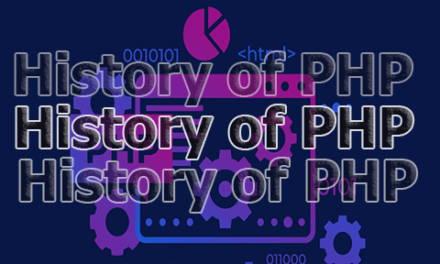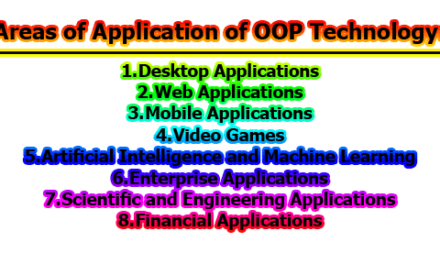Polygon Intersection:
Polygon intersection is a fundamental problem in computational geometry that addresses the task of determining the overlapping regions between two or more polygons. These polygons are geometric shapes defined by a sequence of vertices connected by edges. The study of polygon intersection plays a crucial role in various fields, including computer graphics, geographical information systems (GIS), robotics, urban planning, and more. The primary objective is to identify and analyze the areas where these polygons share common space. In the rest of this article, we will explore the algorithms and techniques of polygon intersection, its importance, detection process, advantages and disadvantages of polygon intersection.
Algorithms and Techniques of Polygon Intersection:
Polygon intersection algorithms are fundamental in computational geometry and have various applications, including computer graphics, geographical information systems, and spatial analysis. These algorithms aim to determine the regions where two or more polygons overlap. Here are some key algorithms and techniques for polygon intersection:
1. Line Sweep Algorithm: The Line Sweep algorithm is a fundamental technique in computational geometry. It involves moving a vertical line across polygons and efficiently tracking segments intersecting the sweep line. The Bentley-Ottmann algorithm is a key adaptation of this approach to solve polygon intersection problems. During the sweep, events occur at polygon vertices and intersection points. By maintaining a balanced binary search tree of intersecting segments, the algorithm can efficiently insert and delete segments during the sweep, effectively identifying polygon intersections.
2. Weiler-Atherton Algorithm: Designed to compute intersections and differences of polygons, the Weiler-Atherton algorithm processes the vertices of two polygons. It traces entry and exit points of edges as they intersect, effectively determining the boundary of the intersection or difference region. This algorithm is especially useful for handling complex polygons with holes and overlapping areas, as it elegantly navigates the intricate relationships between the edges.
3. Boolean Operations on Polygons: The Greiner-Hormann algorithm is a technique for performing set operations (union, intersection, difference) on polygons. This approach involves processing the vertices of input polygons to create resulting polygons. The algorithm identifies overlapping regions and constructs new polygons based on the relationships between edges. It’s valuable for scenarios where combining or analyzing multiple polygons is required, such as in geographical information systems.
4. Sutherland-Hodgman Algorithm: The Sutherland-Hodgman algorithm is primarily used for polygon clipping. It determines the intersection of one convex polygon against another. The algorithm iterates over each vertex of the subject polygon and clips it against the edges of the clip polygon. This process generates a new polygon representing the intersection area. It’s particularly effective for simple, convex polygons.
5. Bentley-Shamos Algorithm: Originally designed for line segment intersection, the Bentley-Shamos algorithm can be adapted for polygon intersection. It employs a divide-and-conquer approach. The polygons are recursively subdivided into smaller subproblems, where intersections are efficiently identified. These intersections are then combined to determine the overall polygon intersections. This algorithm is notable for its efficiency in handling larger and more complex polygons.
6. Plane Sweep Algorithms: Plane Sweep algorithms extend the concept of line sweep into three dimensions. These algorithms are especially useful for handling 3D geometric problems, including polygon intersection in 3D space. Similar to the 2D line sweep, a sweeping plane moves through 3D space, processing events at vertices and intersections of polygons. This technique is essential for various applications like computer graphics and spatial analysis.
7. Monte Carlo Methods: Monte Carlo methods offer a probabilistic approach to estimating intersection areas. Particularly useful for complex or irregular polygons where analytical solutions are challenging, this technique involves generating random points within a bounding box and checking if they lie within the polygons. By calculating the ratio of points within the polygons to the total points generated, an estimate of the intersection area can be obtained.
8. Geometric Primitives: Basic geometric primitives such as lines, line segments, and triangles form the building blocks of more complex polygon intersection algorithms. Efficient intersection tests for these primitives are crucial in determining whether these basic elements intersect or not. These tests are the foundation for constructing more advanced algorithms.
9. Polygon Clipping: Techniques like the Cyrus-Beck algorithm extend the capabilities of polygon clipping beyond the Sutherland-Hodgman algorithm. They enable the clipping of polygons against arbitrary convex polygons, which is useful in scenarios where polygons need to be cut or shaped based on complex boundaries.
10. Spatial Indexing: Spatial indexing techniques, like the R-tree, provide efficient data structures for organizing spatial data. These structures help accelerate polygon intersection queries by narrowing down potential intersections before detailed checks. This is particularly important when dealing with a large number of polygons or complex spatial relationships.
Importance of Polygon Intersection:
Polygon intersection is a fundamental concept in computational geometry with profound significance across various fields. Here’s a brief look at its importance:
- Computer Graphics: In computer graphics, polygon intersection is pivotal for determining visible surfaces in 3D scenes. By identifying which parts of objects are visible or hidden from a given viewpoint, polygon intersection contributes to realistic rendering. This process significantly improves the efficiency of rendering engines by only processing and rendering the visible polygons, resulting in optimized performance and enhanced visual quality.
- Geographical Information Systems (GIS): GIS applications heavily rely on polygon intersection to analyze and manipulate geographical data. It enables the identification of common areas between regions, overlaying different map layers to reveal insights such as land use patterns, demographic distributions, and environmental factors. Spatial queries, such as finding points within specific regions, are efficiently executed using polygon intersection.
- Urban Planning: Urban planners leverage polygon intersection to make informed decisions about land usage and zoning regulations. By analyzing intersections between different zoning areas and land parcels, urban planners can assess the impact of proposed developments, allocate resources effectively, and ensure the harmonious growth of cities.
- Robotics and Path Planning: In robotics, especially for autonomous vehicles and industrial robots, polygon intersection plays a crucial role in path planning and collision avoidance. By identifying intersections between robot trajectories and obstacles, algorithms can compute collision-free paths, ensuring safe and efficient navigation in complex environments.
- Manufacturing and CNC Machining: Polygon intersection is essential in manufacturing processes, particularly in Computer Numerical Control (CNC) machining. It assists in generating tool paths that avoid collisions between cutting tools and workpieces, guaranteeing smooth and precise machining operations. This technology enhances productivity while preventing damage to machinery and materials.
- Computational Biology: In computational biology, polygon intersection aids in studying complex molecular structures. It’s used to analyze protein-protein interactions, DNA-protein binding sites, and molecular docking. These insights contribute to understanding molecular functions, drug design, and disease mechanisms.
- Environmental Studies: Environmental researchers employ polygon intersection to analyze habitat overlaps, calculate biodiversity indices, and assess the impact of land use changes on ecosystems. It’s crucial for designing effective conservation strategies and managing natural resources sustainably.
- Traffic Flow Analysis: Transportation planners use polygon intersection to analyze traffic flow patterns. Overlaying road networks with traffic data helps identify congested areas, plan efficient transportation routes, and optimize traffic management strategies.
- Architecture and Design: Architects utilize polygon intersection to evaluate building designs in relation to zoning regulations and spatial constraints. This ensures that proposed structures align with urban planning guidelines, enhancing the integration of architecture within urban environments.
- Terrain Analysis: In geography and geology, polygon intersection assists in analyzing terrain and landscape characteristics. It helps identify areas susceptible to flooding, erosion, or other natural hazards, aiding in land management and disaster mitigation.
- Crime Mapping and Analysis: Law enforcement agencies use polygon intersection to analyze crime patterns. By overlaying crime data with geographical information, analysts can identify crime hotspots, allocate resources effectively, and develop targeted crime reduction strategies.
- Virtual Reality and Augmented Reality: In virtual and augmented reality applications, polygon intersection contributes to the seamless integration of virtual objects into the real world. By accurately determining where virtual objects intersect with the physical environment, these technologies create immersive and interactive experiences.
- Medical Imaging: Medical professionals use polygon intersection in medical imaging to study the overlap of different anatomical structures. This assists in accurate diagnosis, treatment planning, and surgical procedures by providing insights into complex interactions within the body.
- Game Development: Polygon intersection is vital in game development for collision detection. It ensures that characters, objects, and obstacles within a game world interact realistically. By detecting intersections between polygons, game engines can simulate accurate collisions, enhancing gameplay and visual realism.
- Natural Resource Management: In natural resource management, polygon intersection helps identify overlaps between different usage zones within natural landscapes. This aids in preserving ecological balance, ensuring sustainable resource utilization, and minimizing the impact of human activities on the environment.
Polygon Intersection Detection Process:
Polygon intersection detection is a foundational concept in computational geometry with wide-ranging applications in fields such as computer graphics, geographical information systems (GIS), robotics, urban planning, and more. At its core, the process involves identifying regions where two or more polygons overlap, contributing to spatial analysis, realistic rendering, collision avoidance, and informed decision-making. Here, we delve into the intricate facets of the polygon intersection detection process, its algorithmic underpinnings, practical considerations, and its significance across diverse domains.
- Polygon Representation: Polygons are fundamental geometric shapes that encapsulate closed regions in space. A polygon is defined by a sequence of ordered vertices connected consecutively by edges. The last vertex is connected to the first, forming a closed shape. This representation is essential for understanding the structure and boundaries of polygons, which is pivotal for intersection detection.
- Intersection Detection: Intersection detection is the heart of polygon analysis. It involves determining the regions where the boundaries of two or more polygons intersect. This process forms the basis for various spatial analyses, ranging from identifying overlapping territories to collision detection in robotics.
- Edge Intersection Testing: The crux of polygon intersection detection lies in testing whether edges from different polygons intersect. Each polygon consists of multiple edges, where each edge is a line segment connecting two consecutive vertices. Edge intersection testing is accomplished through intricate geometric calculations, examining factors like line slopes, orientations, and bounding box intersections. Various algorithms, both brute force and optimized, have been developed to efficiently handle these calculations.
- Convex vs. Non-Convex Polygons: Polygon types play a significant role in intersection detection complexity. Convex polygons have all interior angles less than 180 degrees and exhibit simpler intersection patterns. Non-convex polygons, with angles greater than 180 degrees, possess concave sections that introduce intricate intersection scenarios. Detecting intersections in non-convex polygons demands more sophisticated algorithms and careful handling of concave features.
- Algorithmic Approaches: Several algorithmic approaches tackle polygon intersection detection, catering to different complexities and use cases.
- Brute Force: This approach involves directly comparing all pairs of edges from different polygons for intersection. While straightforward, it can become inefficient as the number of edges increases.
- Sweep Line Algorithm: Based on a sweeping line concept, this algorithm involves moving a line across the polygons and efficiently tracking intersections. Events occur at vertices and intersection points, allowing for effective management of intersecting segments.
- Bentley-Ottmann Algorithm: An evolution of the sweep line approach, this algorithm employs a balanced binary search tree to manage intersecting segments, optimizing intersection detection and reducing computational complexity.
- Weiler-Atherton Algorithm: Initially designed for polygon clipping, this algorithm identifies intersections by tracing entry and exit points of edges from different polygons. It is particularly useful for tasks involving polygon overlay and difference operations.
- Implementation Steps: The practical implementation of polygon intersection detection involves a series of steps:
- Bounding Box Intersection: Before detailed edge testing, bounding boxes of potential intersecting edges are checked. If bounding boxes do not intersect, further intersection testing is unnecessary.
- Detailed Edge Testing: If bounding boxes intersect, detailed edge intersection testing is performed. This involves intricate geometric calculations to determine whether the actual edges intersect or cross each other.
- Intersection Point Recording: When an intersection is detected, the coordinates of the intersection points are recorded. Additionally, relevant information about the intersecting edges, such as indices or identifiers, is stored.
- Numerical Precision and Degenerate Cases: Numerical precision and degenerate cases are crucial considerations in polygon intersection detection:
- Numerical Precision: The use of floating-point arithmetic in geometric calculations introduces small errors. Robust algorithms implement techniques like exact computation or interval arithmetic to mitigate inaccuracies and ensure reliable results.
- Degenerate Cases: Special scenarios, such as edges that overlap or share endpoints, require careful handling. Algorithms need to recognize and correctly address these situations to avoid misinterpretations.
- Importance of the Process: The significance of polygon intersection detection spans numerous domains:
- Geographical Information Systems (GIS): Enables overlay analysis, spatial queries, and map overlays for decision-making and spatial insights.
- Computer Graphics: Critical for rendering realistic scenes, managing hidden surfaces, and optimizing rendering performance.
- Robotics and Collision Avoidance: Essential for safe path planning, enabling robots to navigate environments without collisions.
- Urban Planning: Supports urban development decisions, land use evaluations, and zoning assessments.
- Environmental Studies: Vital for habitat analysis, biodiversity assessments, and environmental impact evaluations.
- Manufacturing and Engineering: Ensures safe and precise machining operations, generating collision-free tool paths.
- Game Development: Crucial for accurate collision detection, enhancing gameplay and realism in video games.
- Scientific Analysis: Used in diverse scientific disciplines to analyze complex spatial relationships and overlaps.
Advantages of Polygon Intersection:
- Geometric Analysis:
- Polygon intersection provides a robust framework for analyzing geometric properties like overlapping areas, containment relationships, and shared boundaries.
- It aids in determining spatial relationships between complex shapes, supporting accurate spatial analysis.
- Real-world Applications:
- Polygon intersection algorithms find applications in diverse domains, including computer graphics, GIS, urban planning, robotics, and environmental studies.
- They offer solutions to spatial problems, enhancing efficiency and decision-making across a wide range of fields.
- Decision Making:
- Polygon intersection offers valuable insights that guide informed decision-making processes in various sectors.
- In urban planning, it helps resolve conflicts between zoning regulations, aiding in optimal land use and development strategies.
- Optimization:
- In manufacturing and design, polygon intersection contributes to process optimization.
- By generating collision-free tool paths and efficient material usage plans, it enhances productivity and reduces waste.
- Data Integration:
- Geographic Information Systems (GIS) benefit from polygon intersection’s ability to integrate diverse datasets.
- It enables the creation of comprehensive maps with combined attributes, enhancing the accuracy of spatial analyses.
Disadvantages of Polygon Intersection:
- Algorithm Complexity:
- Some polygon intersection algorithms can be complex and computationally intensive, especially when dealing with a large number of vertices or intricate polygons.
- This complexity may impact processing times and resource requirements.
- Numerical Precision:
- Floating-point arithmetic, commonly used in geometric calculations, introduces precision issues.
- Numerical errors can accumulate and affect the accuracy of polygon intersection results, requiring careful handling and robust algorithms.
- Non-Convex Polygons:
- Non-convex polygons introduce additional complexities due to their concave segments and multiple potential intersection points.
- Determining accurate intersections in such cases requires sophisticated algorithms and meticulous handling.
- Implementation Challenges:
- Correctly implementing polygon intersection algorithms demands expertise in computational geometry.
- Addressing edge cases, handling degenerate situations, and ensuring robust geometric operations are challenging aspects.
- Preprocessing:
- Polygon intersection often requires preprocessing of input data to ensure consistent vertex ordering and polygon orientations.
- This preprocessing step can be time-consuming and may add complexity to the overall implementation.
In conclusion, polygon intersection algorithms serve as indispensable tools for spatial analysis, process optimization, and decision-making across diverse disciplines. While offering significant advantages, the intricacies of their algorithms, numerical precision concerns, and implementation challenges necessitate careful consideration to ensure accurate and efficient outcomes.

Library Lecturer at Nurul Amin Degree College










